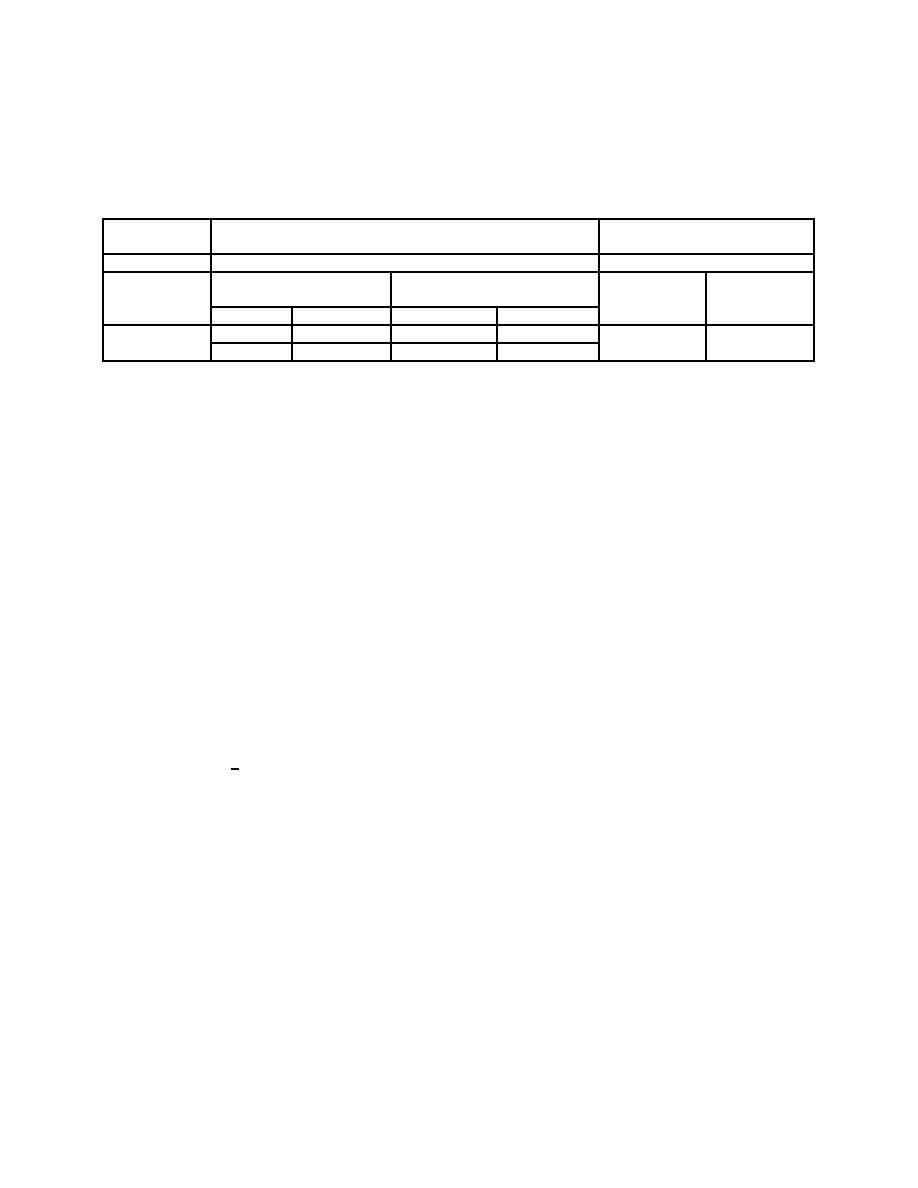
TB 9-6685-316-50
(14) At the nominal pressure of 1800 psi, if the dP of equation 1 above is positive,
add 1/10 of weight calculated in equation 2 above to the standard instead of the
instructions of (7) above.
Nominal
Weight combination test instrument
Calibration
pressure (psi)
and standard, including pistons
weight (oz)
100
1-95
1/8 And 1/32
Low-range piston
High-range piston
(Standard)
Test
test instrument
(standard)
floating
instrument
Qty
Press. Unit
Qty
Press. Unit
(oz)
floating (oz)
1800
1
956
1
950
1/4 and 1/32
2, 1/2 and 1/4
17
100
4
200
(15) Install high-range pistons in cylinder housings of TI and standard.
(16) Install 0-10,000 psi pressure gage.
NOTE
When using the high-range piston in both the standard and
TI the reference line of the standard is 6.09 inches above the
reference line of the TI. This is equivalent to 0.1936 psi. A
mass of 1/16 oz must be placed an the TI to compensate for
pressure developed by the fluid head.
(17) Place the 475-psi and nine of the 500-psi weights supplied with the 71 on the
TI piston.
(18) Place the 950-psi and four of the 1000-psi weights supplied with the standard
on the standard piston.
(19) Compute the deviation of the developed pressure from the nominal pressure
of 5000 psi from the Report of Calibration furnished with the standard, using the
following equation:
Equation 3.
dP = 5000 - PR g
gc
Where: dP = difference between nominal pressure and developed pressure (psi).
5000 = nominal pressure (psi).
PR = developed pressure (psi) from Report of Calibration furnished with the standard. gc = local gravity
(furnished with Report of Calibration).
g = 980.665 or 980.217 cm/sec2 (design gravity of piston and cylinder combination).
(20) If dP of equation 3 is positive (+), compute the additional weight required on
the standard to obtain a reference pressure from the equation:
Equation 4.
W = (dP)(0.01)
where: W = weight (lb) to be added to standard to obtain a reference pressure (using avoirdupois weight
set (A1), to the nearest nominal weights combination).
dP = difference between nominal and developed pressure from equation 3 above.
0.01 = nominal piston area of standard (in.2).
9

